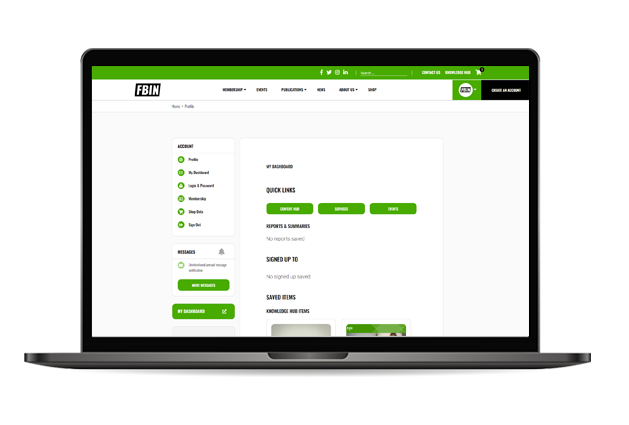On January 18 we are hosting a Digital Deep Dive to discover the potential of live-data in sports. One speaker at the event is Maximilian Schmidt, Co-Founder & Managing Director at Kinexon. In this interview we are talking about live-data and how it can be used by football organiations, media and brands.
What are your current business and service offerings at Kinexon? Among them, which one is the most prominent?
Maximilian Schmidt: Kinexon is a global tech company based in Munich and Chicago. We work with more than 400 sports customers globally and are one of the leading data analytics providers for professional sports. At the moment, our focus is professional sports. Our vision is to provide the best performance in sports powered by technology. And how do we do that? We want to provide our partners, teams, clubs, leagues, and media with the next level of insights, equipped with real-time data and analytics to enhance the way we experience sports. Our main offerings are club and league business. For club business, it includes performance insights for coaches and players to improve the team and player performance on the pitch, while for the league business is live-performance analytics to increase the value of the sport by enhancing the fan experiences from the new insights that we can provide through live metrics. The current most prominent would be the club business. We have more than 200 teams working with our solutions daily to help their players and their teams learn objective insights about their performance in practice and games. We are known for enabling athletes to reach their next levels and unlock their full potential.
Who are Kinexons’ target customers? Your website features both sports and other industries; are there any differences between them?
We founded our companies knowing that our state-of-the-art technology can help many industries unlock their digital transformation potential. Still, our original use case was sports, as we are all sports enthusiasts. Then we learned that the industrial sectors like manufacturing or logistics need the same technologies to enhance the way they operate on the shop floors. That’s why we built up those two pillars in one company group: sports and industries. So for sports, we focus on professional team sports, including football, handball, basketball, hockey, American football, volleyball, etc. And within these sports: teams, leagues, federations are our key customers.
The most significant difference between the sports and industrial sectors is that the overall project scope of the former is relatively small. For example, we only equip around thirty guys on the football pitch. In contrast, we provide thousands of assets on the shop floor in industrial businesses like BMW. The requirements are also different – though we base on the same technology stack. The applications also need to be designed and customized towards various industries’ needs and desires.
How does Kinexon adapt to different kinds of sports? Do you need a deep understanding of each sport?
Clearly yes! I think the technology doesn’t mind which sports are being played, but more from the people using it. That’s why we have dedicated experts in different sports like sports scientists and sport practitioners who have coaching licenses, for example, UEFA coaching licenses. They know how to harness the data in the best ways. Ultimately, our customers want to work with the team to improve. The data should only be a tool for communicating, but not something that is a waste of time.
How can Kinexon differentiate in the sports data industry, which is strongly competing for clubs and entertainment brands? What are your USPs?
First, every time we think of new solutions for our customers, it is being reliable at any given time or providing those insights in real-time, or in other words, live data. So not only pre or post-game or training, but when things are happening during the match. Second, we offer sport-specific analytics because most of the technologies on the market can provide only insights into athletic performance. However, football or basketball is not entirely about running or only about how fast you can run. It’s how fast you can run in a sport-specific situation. Hence, we differentiate ourselves to provide those insights relevant to specific situations, like what insights would be helpful for the defenders, attacking players, or the coaches. Third, it’s also about transforming data into valuable insights, so not only data but easy-to-consume insights for our users. The coach does not want to know all millions of data points we are collecting. Still, they have specific questions, and our solutions must answer these questions. They want to understand how their players perform compared to their individual baseline and competition requirements.
Why does live-data have a huge potential for the sports industry, particularly football? What are some of its applications, both on-and-off the pitch?
I think the game’s development is that it is becoming faster, and you need to get feedback faster as well. If you are a coach, you want to make decisions immediately during training and right on the pitch, not after. The same goes when you’re in the game; you want to react instantly based on your team’s performance against a specific opponent. And you can only actually use the data if you have the insights available at that moment where things are happening. So that’s why it’s so important to have ‘live data’. For example, when we have worked with the Head of Performance Diagnostics of TSG 1899 Hoffenheim – Dr. Sascha Härtel, he always mentions one youth player that had ongoing challenges and was behind his baseline, and they only spotted that after the training. So by providing the data in real-time, Dr. Härtel can pull him out during practice and have the medical team check what might be wrong and react fast after only 20 minutes. He can then work on the rehab to reach his total capacity as fast as possible. That’s why we provide solutions that process everything instantaneously and are available on tablets or smartphones, so all the information is right in the users’ hands.
The same goes with fan engagement. Many leagues want to enhance the quality of the product for young audiences since they don’t just watch 90 minutes of football anymore. They want to interact during the game and want to personalize the content. And the way to do that is like having real-time insight into the performance of their favorite players. It’s like: “This is my favorite player. I’m a big fan of Thomas Müller, and I want to know how he’s performing right now, so I can interact, create exciting content and post it on social media to comment and share with my friends”. I think fans have a demand and desire to interact more, and live data is a key enabler to facilitate many applications that can be done during a game. And that’s why it’s crucial to have it.
What are the fundamental steps for sports clubs to start using/embracing live-data?
I would say it’s people. It’s all about having people that understand the value and know to use data-based insights. We have seen a big transition for the last seven years in this business that more people are improving themselves to use data and relevant tools more efficiently. Hence, we offer extensive education by our sports scientists to help our customers and partners to get the most out of those tools. The fundamental thing for clubs is having the right people that embrace the challenge of implementing innovative solutions and then really push themselves to reach the next level. There has been tremendous ongoing development since we started. Around 30% of the German Bundesliga teams had such solutions back then. Now, almost every club is using those. You already see that they’re adapting very fast, and the people working there turn into experts and challenge you more. So, all in all, I think every team must have the right person, coach, and mindset to work with live data and these tools.
What are the main barriers for small to mid-size sports organisations to adopt such technology?
Probably “time”! Time is the essential part. The coaches and staff in any professional sports organization have a 24/7 job during the season. They work over weekends, travel a lot with the team, and be there for the players. So the biggest challenge is finding the time and working with the data. Many teams that we work with for the first time have such questions as: now that we implement the new tools, how does it suit my daily schedule? Therefore, our team must keep simplifying the gears and the application to provide the insights for the users in the simplest way to get only the most relevant insights they’re interested in. The ideal scenario is when our tool fits into their daily operations and facilitates the whole communication process with objective data. It will also help users make better decisions, whether scheduling practices for the team or designing customized individual training. From our side, it is to make the solutions more user-friendly every day, educate the people to have the confidence using them, and truly understand their daily routine before any implementation.
What are some ways sports clubs can monetise live-data?
Indirectly, our users can benefit from having fewer injured players in their teams. If you have fewer injured players, you will have more value for your salary funds. In a way, you already monetize by having your team healthy and available. I think that’s a big thing.
Directly, you can monetize from live data by creating personalized offerings for the fans based on valuable insights like a premium account. For example, clubs can integrate performance data of the players during live matches and provide them for premium users of their club channels on their second screens. Moreover, with live data, you can have more ways for sponsorship activations. Another example is that a sponsor will have LED screens during games and have dedicated live performance data. Sponsors can be more authentic and relate directly to the game by showcasing what is going on on the pitch. This removes the gap between promoting their products while people are watching the game. It is more valuable to put content on the screen that relates directly to the game. Therefore, we see great potential for clubs to increase the sponsorship activations for existing and new partners. Clubs can also create new categories like official data partner and official performance partner and utilize the technology to provide sponsors with some data points to produce more activation on social media, second-screen application, etc. These are the two most common ways of monetizing data – both direct and indirect.
Could you share one of your client’s case studies, who is a sports club that successfully harnessed the power of live-data?
From a sports performance aspect, I would say it is the Red Bull soccer family or specifically Red Bull Salzburg and their youth academy in Liefering. It’s a top-notch example of performance diagnostics around the team of Manfred Düring. They’re one of our power users; they have incredible knowledge of making the best out of data to improve player development and team development across their entire academy. The pure amount of top talents they get out of their academy is a perfect example of how they use innovative technology to establish the most professional academy. They use the data to work more professionally with the athletes; design customized new programs and practices aligned with their game philosophy.
Regarding fan engagement, the LIQUI MOLY HBL – the German Handball League – is a great case study of bringing live player and ball data into a league and finding a dedicated sponsor that works on several collaboration levels – Deutsche Kreditbank (DKB). For example, they have an MVP activation based on performance data and player index. On every match day, they integrate the data on their website and social media activation for the different clubs to find new sponsors besides current ones. Plus, the teams have individual sponsorship activation. For example, the Rhein-Neckar Löwen have a great activation with SAP to define the player of the match based on the data they’re generating. So I think the German Handball League is an excellent example of utilizing data for monetization purposes and finding new sponsors to bring the league to the next levels.
In 2021, Kinexon became the world’s first and only FIFA preferred provider for live player tracking. And FIFA has this Electronic Performance and Tracking Systems (EPTS) Program as a benchmark. What are the key criteria in this program? How did Kinexon fulfill these requirements?
FIFA has a very rigorous process evaluating technology that helps football as a game to evolve and make the game better on and off the field. So that’s why they’re inviting technology providers like us to showcase innovations continuously. They have also established a program where they find scientific ways to evaluate the validity and reliability of the data. When they tested our technology, the first main criteria were to provide a top-notch, reliable solution that a club or a league can rely on. The Preferred Provider Program acknowledged Kinexon as a top live player tracking provider, so that’s first of all, it’s a recognition of our excellent work. Secondly, I think FIFA also wants to work with partners who push themselves to find new tech applications in football. So how can we utilize live player data to help officiating? How can we utilize these data for in-game usage, football performance analysts, or for new ways of fan engagement? They probably seek partners who define themselves as thought leaders and work in workshops and testing cases on new applications that we can bring to the world of football. In short, it’s like a two-fold concept. First, you must have a top solution that passes their rigorous scheme. The second is that you have to be a pioneer pushing further innovation for the game’s future.
When talking about data tracking in sports, most people will only refer to player-tracking, but I got to know you are also the world’s only provider of ball-tracking technology. What is it? Could you elaborate on its applications and give a few examples?
There are three main applications for ball-tracking: context-based sports performance, helping officiating and refereeing process, and utilizing ball data to develop new fan engagement concepts and applications.
When we started building Kinexon, the overall idea was that we wanted to track players’ performance. And if you track players, you know a lot about their movement and athletic performance. But there’s one missing piece. If you don’t analyze the ball in any sport, you won’t get the context of what’s going on. In contrast, you will know if the performance is effective or not if you have the ball. So we worked early on in defining and designing our technology to have the capability to track the players and the ball. We are delighted to partner with Derbystar /Select on a first-connected ball already used by some of our customers in training. It also offers ways to change from pure athletic performance tools to context-based performance tools. You can then analyze the quality of implementation of how you’re executing the transition game, like changing from offense to defense or how quickly your players react to such situations. This is more efficient when tracking the ball and detecting those events in real-time. Additionally, ball tracking can help teams analyze the whole game from a football perspective, not from an athletic perspective.
Secondly, we also find out that ball-tracking can facilitate the officiating and refereeing process. Oftentimes, you have to be decisive in many situations, VAR, for example, and ball data could help the decision-making process be more precise with the instant information in your hands.
Lastly, regarding fan engagement, I think we have only touched the tip of the iceberg of utilizing live ball data. For example, if you want to know how fast Ronaldo’s shot was and want to have the information instantaneously. Was it 120km/h and the fastest shot on target during that match, or even throughout the whole tournament? We can also analyze the shot’s spin for goalkeepers to prevent getting a goal because the whole flight curve could be hard to predict if you are a goalie. Having such information opens new ways of telling stories in the game. These applications will make future ways to consume the game in the arena or at home in front of our screen, our betting or gamification experience, etc.
How does the manufacturing side of ball-tracking technology work? Do you have to put the sensor/chip in the ball or something like that?
It is crucial that we don’t do everything by ourselves. We are not ball manufacturers but a technology provider, so manufacturing is more from the ball manufacturer’s side. The ball manufacturer places the sensor within the ball during the production process. No matter what happens to the ball, whether you kick it or when it’s in the air or whatsoever, the sensor won’t be damaged. The intellectual property and know-how on integrating the sensor into the ball is a part of that manufacturing process, which is the expertise of our partners.
You will be part of our Digital Deep Dive Session on january 18 to discover the potential of live data in sports. What sneak peek would you want to share with the audience?
I think the one thing that I can promise is that Nicolas Evans – the head of Football Research and Standards, will share his priceless perspective from FIFA. As FIFA is the global governing body of football, they’re always at the forefront of thinking about what might be next. So he will share the perspective of the Federation where this topic can go. We also have Frank Bohmann – the Managing Director of the German Handball League, who can give deep-dive insights on their innovative applications and their latest examples like having live data on LED screens, and how to translate that into the viewing experience. From my side, I will give some examples of my colleagues in the US on how they use live player data to enhance the viewing experience for American sports. Maybe another two examples from Germany, so we can have the European perspective.


 Upgrade to Premium Now
Upgrade to Premium Now






